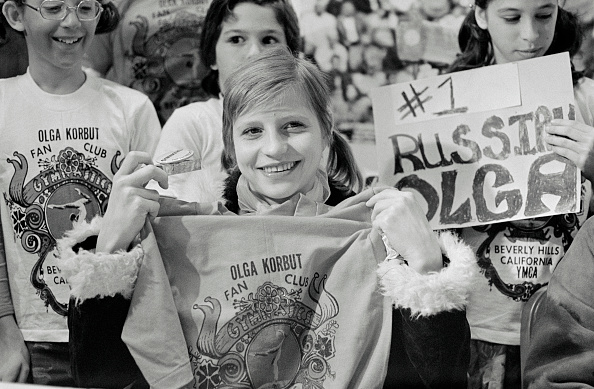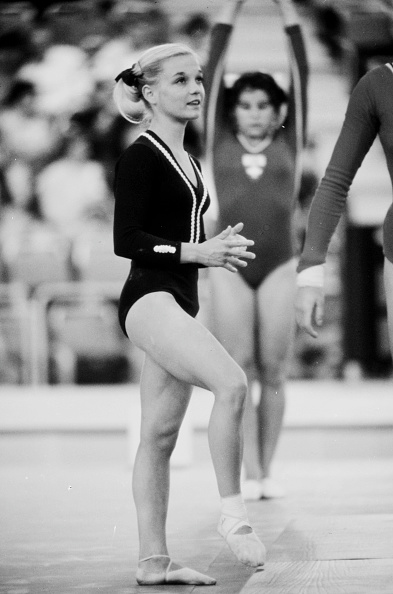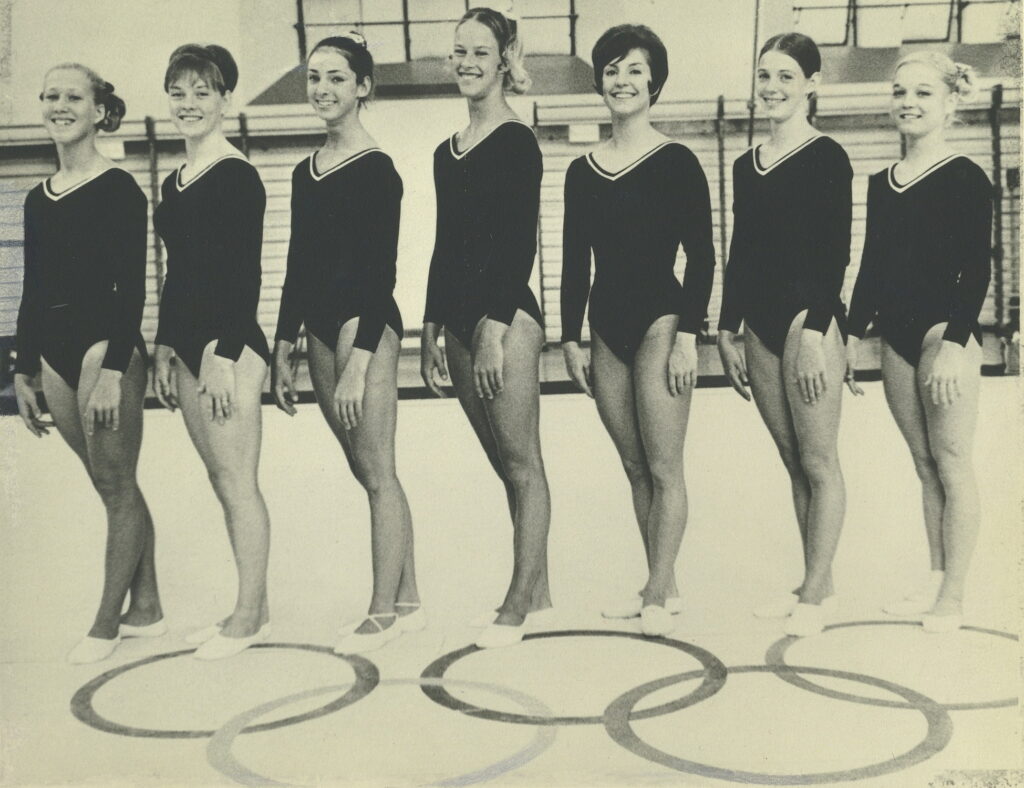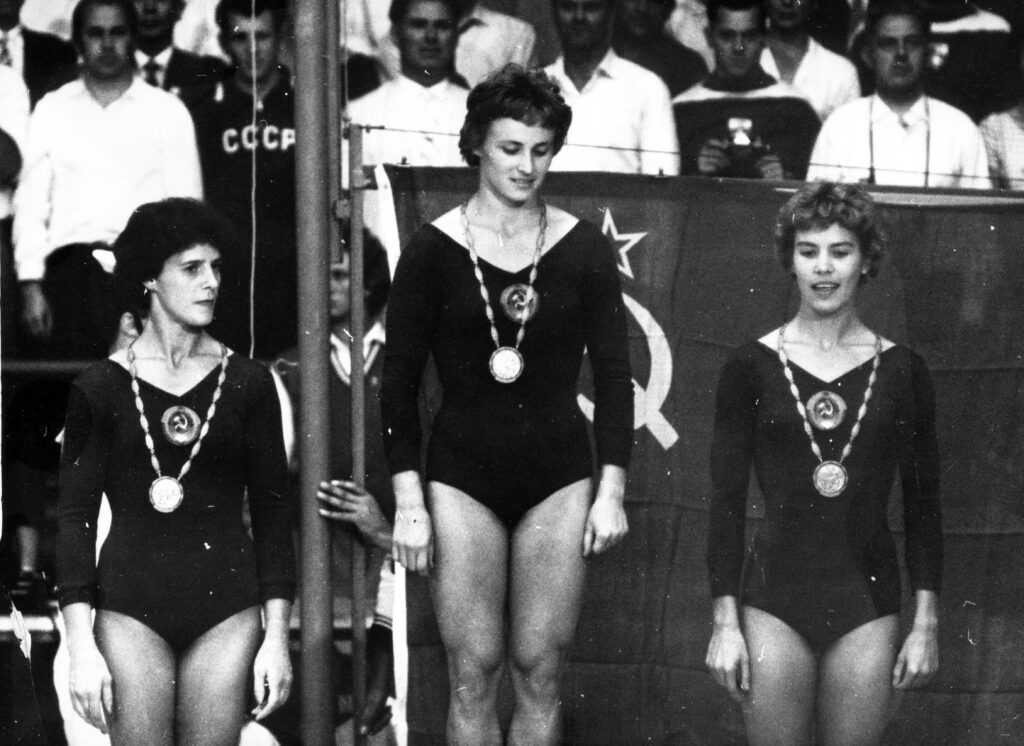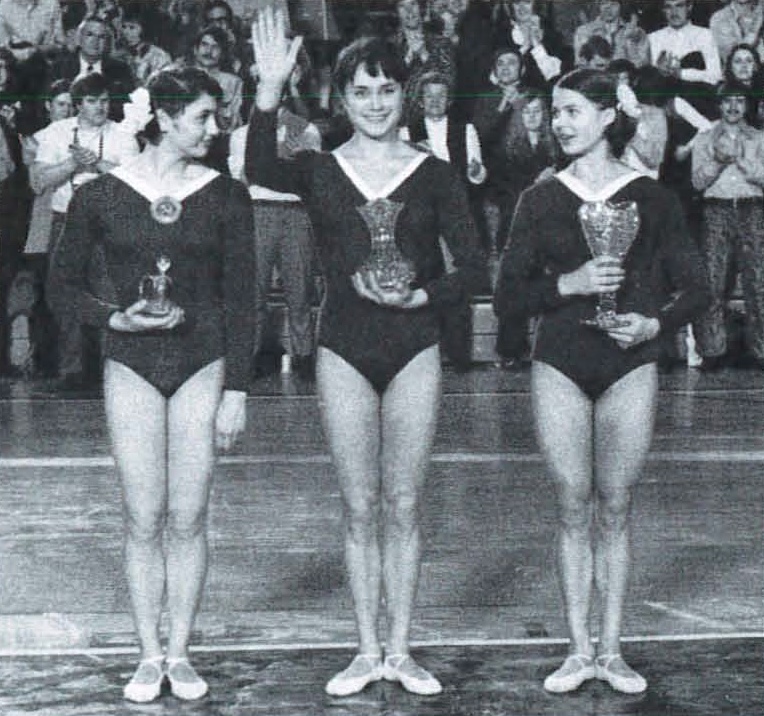It’s an understatement to say that the world couldn’t get enough of Korbut after the 1972 Olympics.
In fact, after the Munich Olympics, the Soviet team didn’t go home. They left immediately for a tour of West Germany, which upset Korbut. As she recalls her autobiography, My Story, she just wanted to go home:
So, after we had already done our best at the Olympics, expending our entire physical and emotional strength, we had to travel from one city to another for the next two weeks, sometimes performing as often as twice a day. We would have to use non-standard small apparatuses in small school gymnasiums, but that was the least of our problems. It was as though someone had gone up to Bob Beamon, the Olympic long-jump champion at Mexico City in 1968, right after he had jumped an incredible 29 ft 2½ in, and said, “Good job, Bob, you’ve done well. Now you have to jump again, for at least thirty feet this time.
The Sports Committee’s only interest was making more money, even if it was at the expense of our health and emotional well-being. We were like slave labor to them.
My Story
The touring didn’t stop there, and because Korbut was the biggest star on the team, the contracts reportedly demanded that Korbut participate in the tours — even when she didn’t want to. As Korbut tells it, she didn’t want to come to the United States, and Larisa Latynina, the head coach at the time, had to fetch her.
Once Korbut and the rest of the Soviet team made it to the United States, they performed around the country and made a trip to the White House to meet with President Nixon. Members of an unofficial Olga Korbut fan club greeted them everywhere, and Korbut appeared on the cover of Sports Illustrated.
If that weren’t tiring enough, a few months later, the Soviet team headed to Great Britain, where Korbut was the star, appearing on British billboards and headlining exhibitions.
Of course, there were detractors — those who didn’t think Korbut’s gymnastics was all it was cracked up to be. But their voices were largely outnumbered by far more enthusiastic ones.
In the following post, we’ll look at a small fraction of the Olga mania that swept the globe in 1973.
